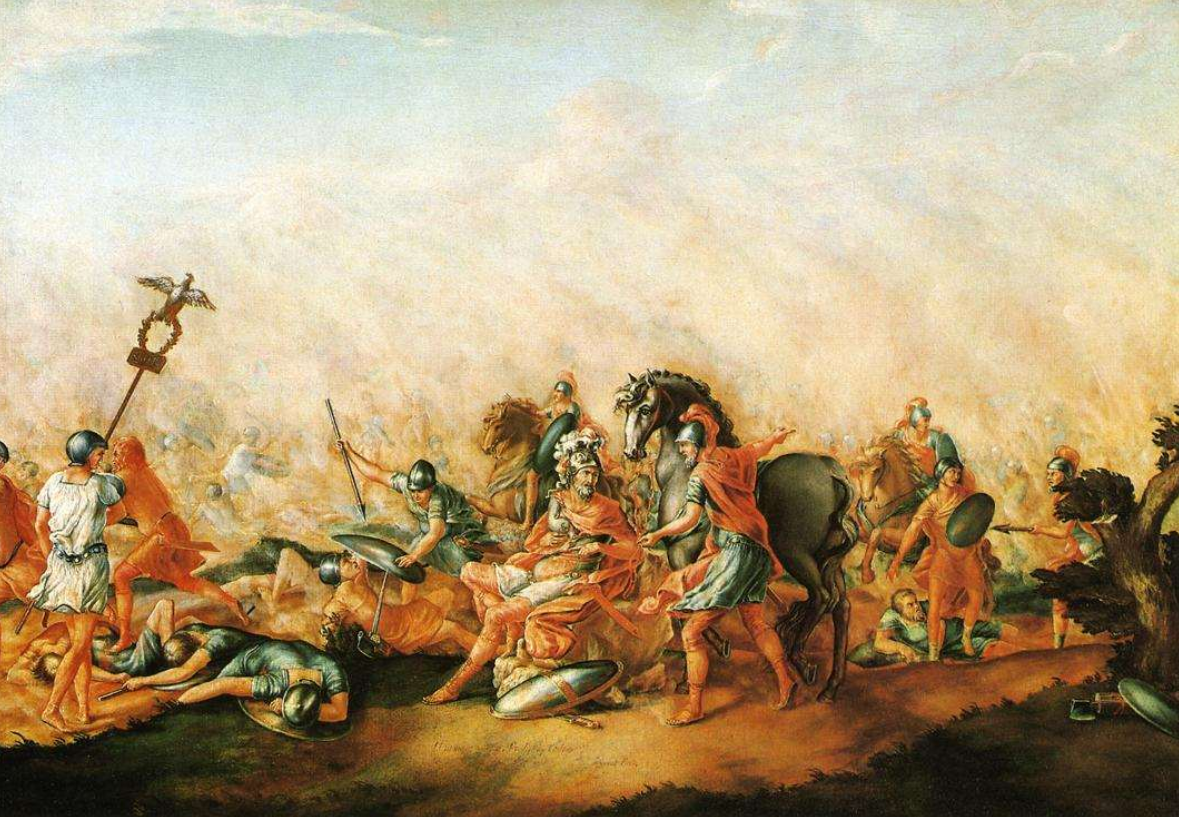The Perfect Modern Gladiator is Tom Hanks (Part One)
Are you not entertained? Tom Hanks at the Sully Japan Premiere.
What was the purpose of gladiatorial combat? Contrary to popular belief, it wasn’t a mindlessly violent festival of blood, guts of gore designed to satisfy the darkest cravings of a bloodthirsty populace. If anything, the Roman games should be classed as an early form of ‘edutainment.’ But before we rush to the heyday of the Colosseum, we need to go further back in time.
Cannae
‘Everybody knows’ that Rome was a military machine; super organised, impeccably drilled, armed to the teeth and terrifyingly efficient at mowing down hordes of barbarians. But the Romans had their fair share of military disasters, and one of the worst was the Battle of Cannae in 216 BCE.
At this point in time Rome had no professional army, but relied on raising legions of civilian citizens. Most of the Roman soldiers were farmers and labourers by profession. Rome was three years into the Second Punic War against the Carthaginians, who were led by the formidable Hannibal Barca. The Roman armies had already taken an absolute battering at the Battle of Ticinus, the Battle of the Trebia and Battle of Lake Trasimene. Now, they faced 50,000* Carthaginians and their allies outside a small town called Cannae in Puglia.
Some may have been apprehensive to fight such a formidable foe, recalling recent losses. Others might have felt more confident, as the Romans outnumbered the Carthaginians significantly; Polybius estimates that their army numbered 84,600. They were the largest army Rome had ever sent into battle.
The Death of Paulus Aemilius at the Battle of Cannae (1773)
In the end, superior numbers didn’t help the Romans, and Cannae was a greater defeat than the three previously-mentioned battles combined. The Roman casualties were staggeringly huge; Livy estimates that 48,200 men died, including one of the two consuls, a proconsul, 29 of the 48 military tribunes, two quaestors and 80 senators, many of them who had also been consul. Livy reckons the Carthaginians and their allies lost 8,000.
In a single day, the Roman army was more than halved, lying hacked to pieces in a field.
Estimates vary, but by the end of the Battle of Cannae, anywhere between 10-20% of Roman male citizens of military age were dead. Thousands more were captured, and fewer than two in every ten men managed to flee for their lives, only to find themselves exiled to Sicily for their cowardice. It is hard to imagine that there were many back in Rome and their allied cities who did not lose a friend or family member.
The losses on the battlefield sent panic throughout the Italian peninsula. Some may have been forgiven for wondering if Rome would fall. Historian Adrian Goldsworthy compares the slaughter and the subsequent shock it caused to the British casualties on the first day of the Somme in World War One. Now imagine that, but add a large number of Members of Parliament and a few ex-Prime Ministers for good measure. Polybius and Livy report that whole regions defected to Carthage as soon as the news broke. Macedonia seized the opportunity to ally with Carthage and declare war on Rome.
In Rome, a panicked city sought scapegoats. Two Vestal Virgins were accused of breaking their vow of chastity and sentenced to being buried alive, though one died by suicide before the sentence could be carried out. One of their accused lovers was beaten so badly he died. Four enslaved people, a Greek man and woman and a Gallic man and woman, were sacrificed by being buried alive beneath the Forum Boarium.
However, the most shocking act during the aftermath came from (what was left of) the Senate, many of whom had family members at Cannae. Hannibal had between 8,000 and 12,000 Roman prisoners who had been left to guard supplies and had thus escaped the carnage. He chose ten to travel to Rome to deliver his terms of their ransom.
But the Senate refused, sending back the message that there would be no negotiations.
They would not pay any ransom, and they forbade private citizens to raise funds either. The prisoners would be left to their fate, Rome washed her hands of them. They should have died. Some still would; Plutarch and Appian pick up the story: Hannibal sold some into slavery, and Plutarch says that some 1,200 were found in Greece 20 years later, still enslaved. Appian says Hannibal slaughtered the rest.
Rather than spend money on men tainted by their perceived cowardice (and simultaneously fill Hannibal’s coffers) the Senate appointed Marcus Junius Pera dictator, who immediately bought 8,000 enslaved men and armed every one who volunteered to fight.**
They were more expensive than paying Hannibal’s ransom demands, but the enslaved, so low in Roman estimations, were still considered better than disgraced citizens. The message was clear: A slave who fights is better than a citizen who surrenders, and dying with honour is preferable to surviving in dishonour.
What does this have to do with gladiators?
Donald G. Kyle puts it wonderfully in his book, Spectacle of Death in Ancient Rome, when he says that Cannae and its immediate aftermath “crystallized the ideology of military virtue.”
The disaster and the decision made in its wake certainly did do something to alter the Roman psyche. The Romans were suddenly confronted with having a huge portion of their male citizens wiped out in a short period of time, and the killing at Cannae was particularly brutal. How were they going to process this? Naturally, horror stories about the battle became rampant, some true, some not so much.
We hear rumours of wounded men lying on the battlefield the next day, unable to move, begging the victors to end their suffering, and of Hannibal building a bridge over the nearby river using Roman corpses.
Rome needed a medium to work through their thoughts about courage and death, and quickly. Anxiety and timidity don’t win wars.
Coincidentally, gladiatorial combat was in its infancy. The first recorded bout in Rome had only occured 48 years before Cannae, and on occasion at very elite funerals there may have been a few pairs of gladiators performing.
Within months of Cannae, the funeral of Marcus Aemilius Lepidus featured an unprecedented 44 fighters. In the following half century, interest in gladiatorial combat accelerated. As prominent patrician families vied to make the funerals of their men more spectacular than those of rivals, gladiators became an increasingly popular option. The third post-funeral show Livy mentions took place in 183 BCE and featured 120 gladiators, the fourth, in 174 BCE, had a mere 74 in comparison, but the spectacle was drawn out over three days to make the most of the entertainment.
Titus Livius statue at the Austrian Parliament Building in Vienna, Austria
Livy naturally only mentions the most noteworthy presentations of gladiators at funerals and we should assume that in the decades after Cannae there were several other instances of funeral fights he deemed unworthy of recording. Certainly, by 166 BCE, the foreign King Antiochus IV started to recruit his gladiators for shows in Antioch-on-the-Orontes from the local population, having grown weary of importing gladiators from Rome for a decade, at great expense.
Fifty years after Cannae, and a Hellenistic king with Roman tastes had not only been hiring from what was clearly an already significant pool of gladiators, but complaining of their high prices.
By this point, the Second Punic War was over, Hannibal had been finally defeated and now lay dead. But Rome always found a new war to fight, and peace was a rare occurrence. Cannae remained a horror story for years, and references to it are found in ancient literature for centuries afterward.
Cicero mentions it a few times, along with the refusal to ransom survivors; he commends the Senate for showing more courage in defeat than they ever had in victory, instilling Roman soldiers with the lesson to “conquer or die.” And if one needed an example of how to fight with courage, the gladiator was an obvious choice. In fact, when yet another foe, the Cimbri, dealt Rome another huge defeat at Arausio (modern Orange in France,) in 105 BCE, Publius Rutilius Rufus hired gladiators to train his soldiers, after which the tide of that war turned in Rome’s favour.
The symbiotic relationship between soldiers and gladiators was largely responsible for spreading spectacle across the empire.
The earliest gladiators were likely prisoners of war in standard armour, unlike the ultra-specialised styles of gladiator in the Imperial period. So not only were these men dressed in military garb, they were military. Over time, gladiators were named for and dressed in the armour of historic foes: Thracians, Samnites and Gauls.
To keep up with demand, criminals and the enslaved swelled their ranks. Romans watched the lowest of the low, dressed as their enemies, fighting under their control and for their gratification. Rome could manipulate the violence. In the arena, Rome always won.
A way to spend leisure time was never the sole purpose of gladiatorial combat.
Spectacle was a prompt that led Romans to consider the importance of martial skill, how to emerge victorious, how to view the vanquished, and increasingly as time moved on, how to be an imperialist power. Even as the army morphed into a professional force populated with soldiers from conquered provinces and the average Italian farmer no longer had to take up arms, there were still lessons to learn in the amphitheatre. The arena taught Romans how to dominate, how to subjugate, how to wield power. The gladiator taught Romans how to be strong, to be disciplined, to be masculine. And, trained to accept an out-turned thumb and a killing blow without fear, the gladiator taught Romans how to stare death in the eye with nary a flinch.
What does this have to do with Tom Hanks?
Well, for the answer to that, you'll need to read Part Two...
* Most of the figures we have for army sizes, casualty lists etc. are approximate estimates. Two ancient historians will give wildly different figures for the same event, (in this case Livy and Polybius, neither of whom were actually there) and it is up to the modern historian to decide who is being conservative and who is exaggerating. You’ll notice that ancient historians love to round up numbers, and we will have to resign ourselves to never knowing accurate statistics. Elsewhere you may see different figures to the ones I use here, because modern historians disagree just as often as our ancient counterparts. I’ve tried to use numbers that come from sensible estimations, and ones that are most frequently used.
** Livy naturally doesn’t reveal if refusing was an actual, viable option. Make of that what you will.




